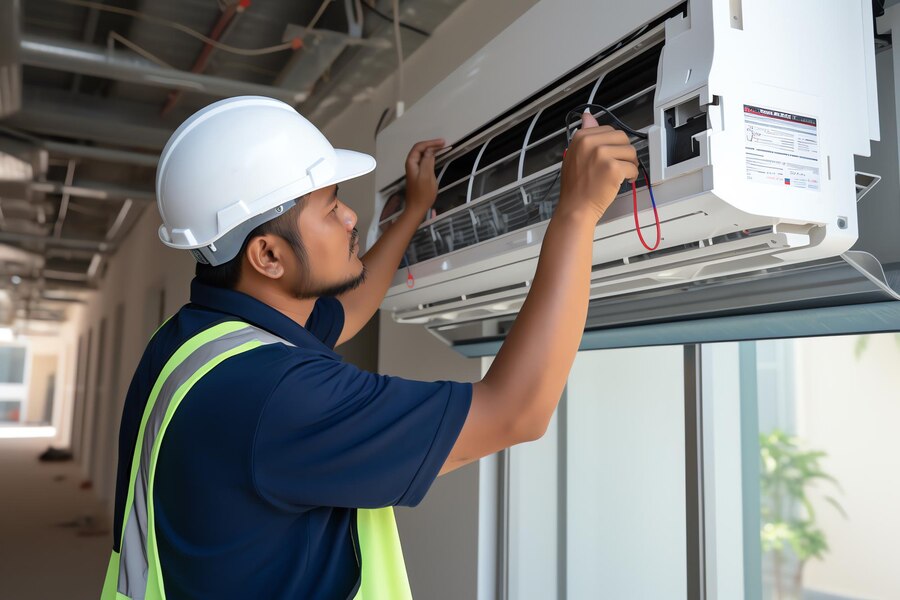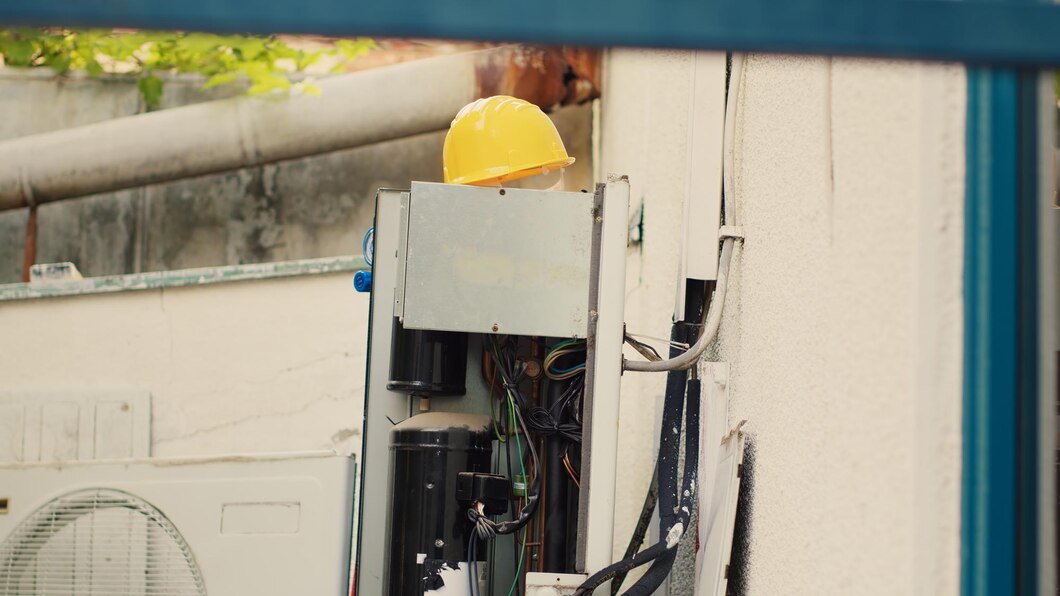
When it comes to keeping your home warm and cozy during the chilly winter months in San Francisco, having a well-functioning furnace is essential. While professional furnace repairs are always an option, some minor issues can be easily fixed with the right tools and a little DIY know-how. In this article, we will discuss the must-have tools for DIY furnace repairs in San Francisco, ensuring that you are well-equipped to tackle any furnace issues that may arise.
Heating and Air Conditioning Services
What is DIY Furnace Repairs?
DIY furnace repairs refer to the process of addressing common furnace issues without the need for professional assistance. While complex problems should always be handled by trained technicians, there are several simple repairs that homeowners in Brea can perform on their own. With the right tools and a basic understanding of furnace systems, you can troubleshoot and fix minor issues, ensuring your furnace operates efficiently throughout the winter season.
The Importance of DIY Furnace Repairs
Before we delve into the essential tools for DIY furnace repairs, let’s first understand why you might consider taking on the task yourself. DIY furnace repairs can be a cost-effective solution, especially for minor issues that do not require professional intervention. Tradewind Heating and Air, a renowned name in the industry, can provide guidance and support for your DIY endeavors.
By learning how to fix common furnace problems, you can save both time and money. Additionally, having the necessary tools on hand will allow you to address any furnace issues promptly, ensuring that your home remains warm and comfortable throughout the winter season.
Essential Equipment for At-Home Furnace Fixes
When it comes to DIY furnace repairs, having the right tools is crucial. Here are some key tools that every homeowner in San Francisco should have in their toolbox:
- Screwdrivers: A set of screwdrivers with different sizes and types (flathead and Phillips) is essential for opening up the furnace and accessing various components.
- Adjustable Wrench: An adjustable wrench is necessary for loosening and tightening nuts and bolts on the furnace.
- Multimeter: A multimeter is used to measure voltage, resistance, and continuity. It can help diagnose electrical issues in the furnace.
- Pliers: Pliers are versatile tools that can be used for gripping, twisting, and cutting wires or other small components.
- Flashlight: A reliable flashlight will come in handy when working in dark or cramped spaces within the furnace.
- Duct Tape: Duct tape is a temporary fix for small leaks in ductwork or to secure loose components until a permanent solution can be implemented.
- Wire Brush: A wire brush is useful for cleaning dirty or clogged furnace parts, such as burners or heat exchangers.
- Shop Vacuum: A shop vacuum can be used to remove dust, debris, or any other foreign objects that may be obstructing the furnace’s airflow.
- Replacement Parts: It’s always a good idea to have some common replacement parts on hand, such as filters, belts, and igniters, in case they need to be replaced during the repair process.

The Essential Toolbox for DIY Furnace Maintenance
Now that you know the must-have tools for DIY furnace repairs, let’s discuss how to effectively use them for routine furnace maintenance. Regular maintenance is crucial for ensuring the longevity and efficiency of your furnace. Here are some basic steps to follow:
- Clean or Replace the Air Filter: A dirty or clogged air filter can restrict airflow and reduce the efficiency of your furnace. Clean or replace the filter regularly to ensure proper airflow.
- Check and Clean the Burners: Over time, burners can accumulate dirt and debris, affecting their performance. Use a wire brush to gently clean the burners and remove any obstructions.
- Inspect and Clean the Heat Exchanger: The heat exchanger is responsible for transferring heat from the combustion process to the air. Inspect it for any cracks or signs of damage, and clean it using a wire brush if necessary.
- Check the Igniter: The igniter is responsible for lighting the furnace’s burners. If it is not functioning properly, the furnace may not ignite. Use a multimeter to test the igniter’s continuity and replace it if necessary.
- Inspect and Clean the Blower Motor: The blower motor is responsible for circulating the heated air throughout your home. Inspect it for any debris or signs of wear and tear. Clean it using a shop vacuum or a soft brush.
- Inspect and Lubricate Moving Parts: Moving parts, such as bearings and pulleys, should be inspected for any signs of wear and tear. Lubricate them as necessary to ensure smooth operation.
To extend the life of your furnace, follow these simple tips:
To extend the life of your furnace, incorporating simple maintenance practices is essential. Firstly, scheduling annual maintenance checks with a professional HVAC technician ensures your furnace remains in optimal condition throughout its lifespan. These routine inspections identify any potential issues early, allowing for timely repairs and preventing costly breakdowns.
Secondly, maintaining clean air filters is crucial. Cleaning or replacing air filters every 1-3 months enhances airflow, preventing dust buildup and ensuring efficient operation. Clearing obstructions from vents and registers also promotes proper airflow throughout your home, preventing uneven heating and reducing strain on your furnace.
Additionally, monitoring thermostat settings and avoiding frequent adjustments can help minimize wear and tear on your furnace. By maintaining a consistent temperature, you reduce the workload on the system, extending its longevity. Lastly, proper insulation is key to preventing heat loss and reducing the workload on your furnace. Ensuring your home is adequately insulated helps maintain a comfortable indoor temperature while minimizing energy consumption and prolonging the life of your furnace. Incorporating these practices into your furnace maintenance routine maximizes its lifespan and ensures efficient operation for years to come.
Mastering DIY Furnace Repairs: Your Complete Guide to Essential Tools and Techniques
With the right tools and a little DIY spirit, many furnace issues can be tackled successfully at home. By having the essential tools for DIY furnace repairs in San Francisco, such as screwdrivers, an adjustable wrench, a multimeter, pliers, a flashlight, duct tape, a wire brush, a shop vacuum, and some common replacement parts, you can confidently address minor furnace problems and ensure the warmth and comfort of your home throughout the winter season.
Remember, while DIY furnace repairs can be a cost-effective solution, it’s important to know your limits. If you encounter a complex or potentially dangerous issue, it’s always best to seek professional assistance. Contact us today for reliable furnace repair services to ensure your home stays warm and safe.

- What is Medication-Assisted Treatment (MAT) and how does it work in addiction recovery?
Medication-Assisted Treatment (MAT) combines FDA-approved medications with counseling and behavioral therapies to address substance use disorders. These medications help alleviate withdrawal symptoms, reduce cravings, and normalize brain chemistry, making it easier for individuals to focus on their recovery journey. MAT has been shown to improve treatment outcomes and reduce the risk of relapse.
- Who can benefit from Medication-Assisted Treatment (MAT) for addiction recovery?
MAT is suitable for individuals struggling with opioid use disorder or alcohol use disorder, particularly those who have experienced multiple relapses or have difficulty maintaining abstinence through other forms of treatment. It can also be beneficial for individuals with co-occurring mental health disorders, as it addresses both substance use and underlying psychiatric symptoms.
- What medications are commonly used in Medication-Assisted Treatment (MAT) for addiction recovery?
Some of the medications used in MAT for opioid use disorder include methadone, buprenorphine, and naltrexone. For alcohol use disorder, medications such as acamprosate, disulfiram, and naltrexone may be prescribed. These medications work in different ways to reduce cravings, block the effects of opioids or alcohol, and support long-term recovery.
- Is Medication-Assisted Treatment (MAT) safe and effective?
Yes, MAT is considered safe and effective when used as prescribed under the supervision of a healthcare provider. Numerous studies have demonstrated the effectiveness of MAT in reducing opioid and alcohol use, improving treatment retention, and reducing the risk of overdose and other adverse outcomes. However, like any medical treatment, MAT may not be suitable for everyone, and its effectiveness may vary depending on individual factors.
- What are the benefits of Medication-Assisted Treatment (MAT) for addiction recovery compared to other treatment approaches?
Medication-Assisted Treatment (MAT) offers several advantages, including reduced cravings and withdrawal symptoms, increased treatment retention rates, improved overall well-being, and decreased risk of relapse. Additionally, MAT addresses both the physical and psychological aspects of addiction, providing a comprehensive approach to recovery.
- Are there any side effects associated with Medication-Assisted Treatment (MAT) for addiction recovery?
Like any medication, those used in MAT may have side effects, which vary depending on the specific medication and individual factors. Common side effects may include nausea, constipation, dizziness, drowsiness, or headache. However, healthcare providers carefully monitor patients on MAT to minimize side effects and ensure safety.
- How long does Medication-Assisted Treatment (MAT) typically last?
The duration of Medication-Assisted Treatment (MAT) varies depending on individual needs and treatment goals. Some individuals may require MAT for a short period to manage withdrawal symptoms and stabilize their recovery, while others may benefit from long-term maintenance therapy to prevent relapse and support sustained recovery.
- Can Medication-Assisted Treatment (MAT) be combined with other forms of addiction treatment?
Yes, Medication-Assisted Treatment (MAT) is often combined with other evidence-based treatments, such as counseling, therapy, support groups, and holistic interventions, to provide a comprehensive approach to addiction recovery. This combination of treatments addresses the physical, psychological, and social aspects of addiction.
- Is Medication-Assisted Treatment (MAT) covered by insurance or affordable for individuals without insurance?
Many insurance plans, including Medicaid and Medicare, cover Medication-Assisted Treatment (MAT) for addiction recovery. Additionally, financial assistance programs, sliding scale fees, and state-funded initiatives may be available to help individuals access affordable MAT services, regardless of insurance status. It’s essential to check with healthcare providers or treatment centers about payment options and available resources.
- How can individuals access Medication-Assisted Treatment (MAT) for addiction recovery?
Individuals interested in MAT can consult with their healthcare provider or addiction treatment specialist to determine if it is a suitable option for them. MAT services are available through specialized treatment centers, clinics, and healthcare providers trained in addiction medicine. Additionally, many community health centers and public health programs offer MAT services to increase access to treatment for underserved populations.
